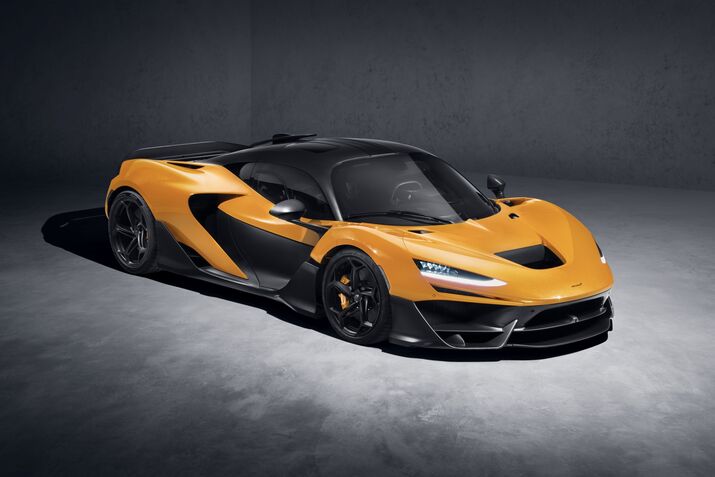
McLaren Automotive has introduced its newest model, the W1 hybrid supercar, priced at $2.1 million, further cementing its place in motorsport-inspired innovation. With a striking design and cutting-edge technology, the W1 serves as a homage to McLaren’s illustrious Formula One history. Limited to just 399 units, all of which have already been allocated, the vehicle promises an exclusive experience for buyers.
The W1 is powered by a hybrid powertrain delivering 1,275 horsepower, placing it among the most powerful road cars ever produced by McLaren. This hybrid system incorporates a twin-turbocharged V8 engine paired with an electric motor, allowing for blistering performance while adhering to increasingly stringent emissions regulations. Despite its hybrid capabilities, the W1 offers the sensation of a traditional supercar with McLaren’s hallmark focus on driving dynamics.
Aerodynamics have been a central focus in the W1’s development, featuring a full-width front wing and a dynamic rear wing known as the “Active Long Tail.” The rear wing can extend up to nearly a foot, drastically enhancing downforce and ensuring optimal performance in high-speed scenarios, especially during track mode. This aerodynamics package allows the W1 to generate up to five times more downforce compared to its standard road setup, significantly improving cornering stability and overall handling at speed.
The W1 is also a masterclass in customization. Buyers have access to a broad range of bespoke options, ensuring that no two models will be identical. This focus on personalization extends from the vehicle’s paint options to its interior, where McLaren offers nearly limitless material choices. It’s this bespoke element that has attracted high-end buyers, many of whom view the W1 as a collector’s piece rather than just a high-performance vehicle.
Notable for its extreme yet efficient design, the W1 incorporates one of the most aggressive rear diffusers ever seen on a road car. The diffuser, which channels air from the rear axle, is integral to the vehicle’s downforce and aerodynamic efficiency. To accommodate this advanced feature, the car’s chassis has been slightly inclined, allowing McLaren’s engineers to achieve an ideal balance between design and performance. Moreover, McLaren’s use of lightweight materials, including carbon fiber and advanced alloys, ensures that the W1 remains agile despite its complex powertrain.
In developing the W1, McLaren sought to offer a hybrid supercar that both honors its racing pedigree and embraces the future of automotive technology. As the automotive industry faces mounting pressure to reduce emissions, McLaren’s decision to integrate hybrid technology into a high-performance vehicle demonstrates the company’s commitment to sustainability without compromising on performance. The W1’s hybrid system not only reduces emissions but also enhances acceleration by providing an instant torque boost from the electric motor.
The introduction of the W1 represents a continuation of McLaren’s legacy, which began with the iconic McLaren F1 in the 1990s. That car, revered for its groundbreaking design and engineering, set a precedent for McLaren’s future vehicles. The W1 pays tribute to the F1 by incorporating certain design elements and performance features while pushing the boundaries of what a modern supercar can achieve.


